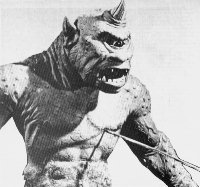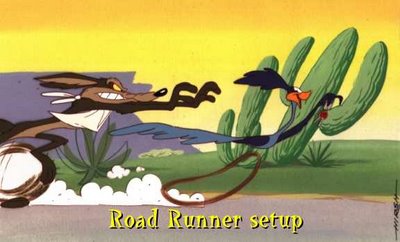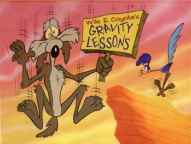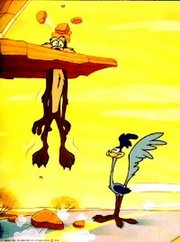Two of my favorite cartoonists were Milt Gross and Rube Goldberg. Milt Gross often gave top flight poses to all the players in the frame, both the aggressors and the reactors.
Okay, he sometimes gave the aggressor (above) the best poses, but you you see what I'm getting at.
I've been influenced by Goldberg so in photo stories, like the kind I do on this blog, I usually give the emphasis to the listener.
Here's excerpts from a photo story I did in June, 2009. The girl (played by me) is surprised when her stupid ex-boyfriend (off screen) approaches her in a restaurant. I'll leave out the dialogue.
She humors him, hoping he'll go away.
But he doesn't.
He says that, now that he knows she hangs out at this restaurant, he'll hang out there too.
Yes sir, they'll be inseparable from now on.
The boyfriend bids goodbye for now...
...but adds that he'll be back.
Well, it goes on. You can link to the whole thing on the side bar. The story's called "The Ex-boyfriend."
The odd thing is that, despite my affection for reactive acting, the animation I worked on usually put the emphasis on the speaker.
That's because I like to work with aggressive characters. They're appealing. The audience naturally wants to see what they're doing, and so do I. Even so, I had a lot of Goldbergian fun working on the reactive scenes and I wish I could have done more of them.
BTW: the last two pictures above aren't mine.





























 Before I get to "Ratatouille" I can't help but comment on the audience I saw it with. I saw the film at The Los Angeles Film School, across the street from the old Cinerama Dome in Hollywood.
Before I get to "Ratatouille" I can't help but comment on the audience I saw it with. I saw the film at The Los Angeles Film School, across the street from the old Cinerama Dome in Hollywood. This review is going to come across as negative. It's not. The film represents a big advance and I'm glad I saw it. If I sound negative it's because the film's many good points have been covered in countless other reviews and I don't see the point in repeating them. I only have a few paragraphs so I'll limit myself to talking about what might have been done better in the film. Nitpickers and curmudgeons, this is for you!
This review is going to come across as negative. It's not. The film represents a big advance and I'm glad I saw it. If I sound negative it's because the film's many good points have been covered in countless other reviews and I don't see the point in repeating them. I only have a few paragraphs so I'll limit myself to talking about what might have been done better in the film. Nitpickers and curmudgeons, this is for you!  On another point, the writing contained too much exposition and too often sounded like a fleshed-out story bible. You get the feeling that an elaborate ending was figured out, then the rest of the the film evolved in logical steps backwards from the ending. In my opinion that's a mistake. It's a good idea to know where you're going but a good story is more organic than that. Writers (hopefully artist writers) shouldn't sit down at a table and say, "What logical step are we going to flesh out today?" They should be saying, "What can we do at this point to wow the audience!? "
On another point, the writing contained too much exposition and too often sounded like a fleshed-out story bible. You get the feeling that an elaborate ending was figured out, then the rest of the the film evolved in logical steps backwards from the ending. In my opinion that's a mistake. It's a good idea to know where you're going but a good story is more organic than that. Writers (hopefully artist writers) shouldn't sit down at a table and say, "What logical step are we going to flesh out today?" They should be saying, "What can we do at this point to wow the audience!? " On another point, Ratatouille is skimpy on set pieces. What's a set piece? The Mad Tea Party in "Alice in Wonderland" was a set piece. The giant cactus dance in "Three Caballeros" was one. Groucho and Chico's "party of the first part" sketch in "Night at the Opera" was a set piece. Olivier's speech at the opening of "Richard III" was a set piece. It's an almost self-contained sketch or musical number within a larger story that's an excuse for tour-de-force writing and performance. Set pieces are the reason a film exists. In a way the rest of the story is just binder to hold the set pieces together.
On another point, Ratatouille is skimpy on set pieces. What's a set piece? The Mad Tea Party in "Alice in Wonderland" was a set piece. The giant cactus dance in "Three Caballeros" was one. Groucho and Chico's "party of the first part" sketch in "Night at the Opera" was a set piece. Olivier's speech at the opening of "Richard III" was a set piece. It's an almost self-contained sketch or musical number within a larger story that's an excuse for tour-de-force writing and performance. Set pieces are the reason a film exists. In a way the rest of the story is just binder to hold the set pieces together. And why was the dialogue so normal? I expect films to have memorable dialogue. Aren't you glad Bogart said, "We'll always have Paris," rather than "Think of the memories we'll have of Paris" ? Aren't you glad Anthony Hopkins said, "I ate his liver with some fava beans and a nice Chianti" rather than "He bothered me so I had to eat him"? Some writers and artists are specialists at dialogue and every filmmaker should have their addresses on hand. You hire them as consultants.
And why was the dialogue so normal? I expect films to have memorable dialogue. Aren't you glad Bogart said, "We'll always have Paris," rather than "Think of the memories we'll have of Paris" ? Aren't you glad Anthony Hopkins said, "I ate his liver with some fava beans and a nice Chianti" rather than "He bothered me so I had to eat him"? Some writers and artists are specialists at dialogue and every filmmaker should have their addresses on hand. You hire them as consultants.



